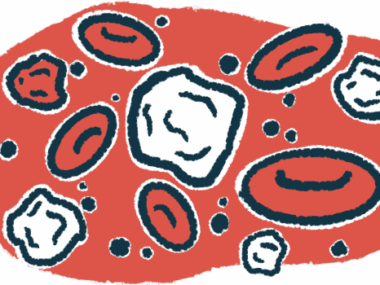Batten-1 may preserve vision with juvenile Batten disease: Scientists
Findings in Phase 1/2 clinical trial, access program also support miglustat's safety
Written by |

People with juvenile Batten disease treated with the small molecule Batten-1 (miglustat) for 18 months in a clinical trial, and who continued with treatment outside the study, showed no signs of deteriorating vision, a common disease symptom, the company developing Batten-1, Theranexus, announced.
All patients completed the open-label Phase 1/2 study (NCT05174039), sponsored by the Beyond Batten Disease Foundation (BBDF), and they chose to keep taking Batten-1 as oral capsules through an expanded access program. At two years of use, the treatment continued to be safe and well tolerated, with case reports suggesting “a possible stabilization of visual acuity,” according to the Batten foundation’s press release.
Both the U.S. Food and Drug Administration (FDA) and the European Medicines Agency (EMA) approved the design of a Phase 3 trial after reviewing Phase 1/2 safety data. Theranexus also launched an offering to fund the planned study, which is expected to test a liquid formulation of Batten-1 considered more suitable for young patients.
“Our positive Phase 1/2 study, as well as very promising additional case reports of expanded use of miglustat with positive outcome on vision, strongly support the launch of our [Phase 3 trial], as well as the selection [of] visual acuity as primary endpoint,” said Mathieu Charvériat, PhD, Theranexus’ CEO and chairman.
People with juvenile Batten are often legally blind by age 12
“These case reports on visual acuity, in conjunction with other personal positive observations on visual experience in younger patients,” add to evidence supporting Batten-1 as a possible disease-modifying therapy, said Gary Clark, MD, the study’s principal investigator at Texas Children’s Hospital in Houston.
The disease usually leads to legal blindness by age 12.
Juvenile Batten disease, also known as CLN3 disease, is caused by mutations in the CLN3 gene, which provides instructions for producing a protein called battenin. Battenin is involved in many processes, from breaking down and recycling unneeded molecules to moving molecules to where they’re needed in cells.
When this protein is faulty or missing, aggregates of fatty molecules build in lysosomes, the structures inside cells where unneeded molecules are broken down and recycled. Nerve cells seem to be particularly vulnerable to the effects of this buildup.
Batten-1 acts to prevent an enzyme called glucosylceramide synthase from working. This enzyme is involved in the production of certain fatty molecules. By blocking the enzyme, Batten-1 is expected to reduce the buildup of fatty aggregates and slow or prevent disease symptoms.
Results from the Phase 1/2 study, reported in “An Open-label Phase I/II Study of Batten-1 (miglustat) for the Treatment of CLN3-Related Juvenile Batten Disease: 12-month Safety, Biomarker, and Efficacy Results,” [page S64], were presented last month at the Child Neurology Society Annual Meeting. That presentation covered findings at 18 months of treatment, according to the release.
Stabilized motor symptoms and vision possible with Batten-1 use
The study enrolled six adolescents and adults, with an average age 18.8 years (five males and one female), who were treated with Batten-1 as oral capsules at a maximum 600 mg dose every day for up to 104 weeks, or about two years.
All patients reported diarrhea and weight loss as side effects of the treatment. Two experienced a lesser appetite, muscle weakness, and low platelet counts. No serious treatment-related side effects were reported.
“The safety profile of Batten-1 is consistent with the known profile in other indications,” the researchers wrote.
At 12 months, “physical assessment scores do not show expected [disease] progression,” the researchers also noted.
In addition to keeping motor symptoms stable for at least 18 months, or 1.5 years, Batten-1 treatment appeared to stabilize vision with juvenile Batten disease, according to case reports on access program patients.
The planned Phase 3 clinical trial will be pivotal, “aimed at supporting the drug’s registration [approval] in the U.S. and Europe,” Theranexus stated in the release.






